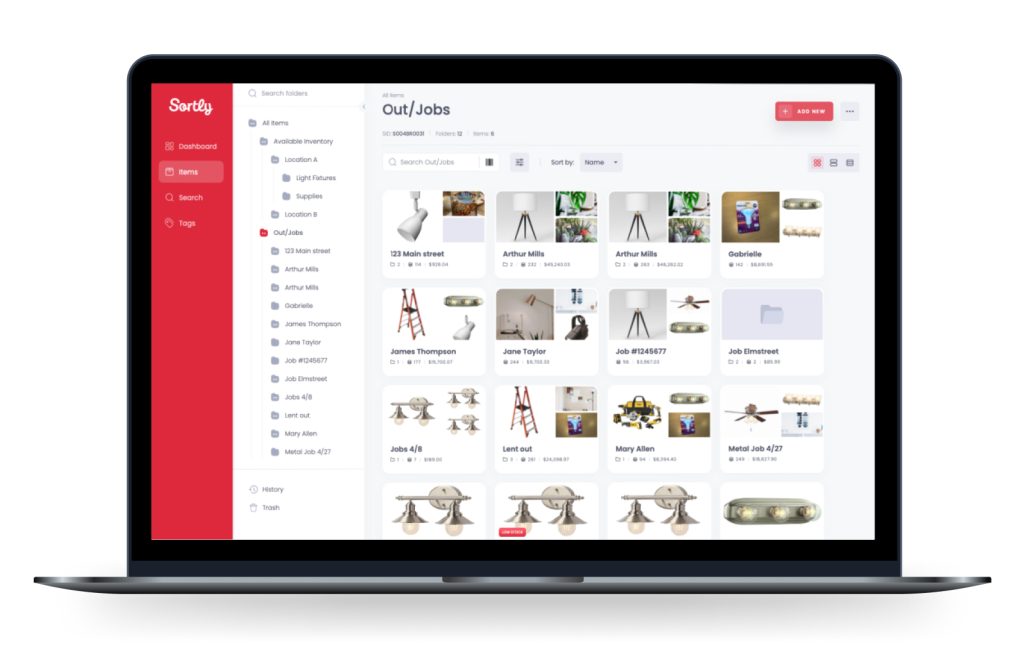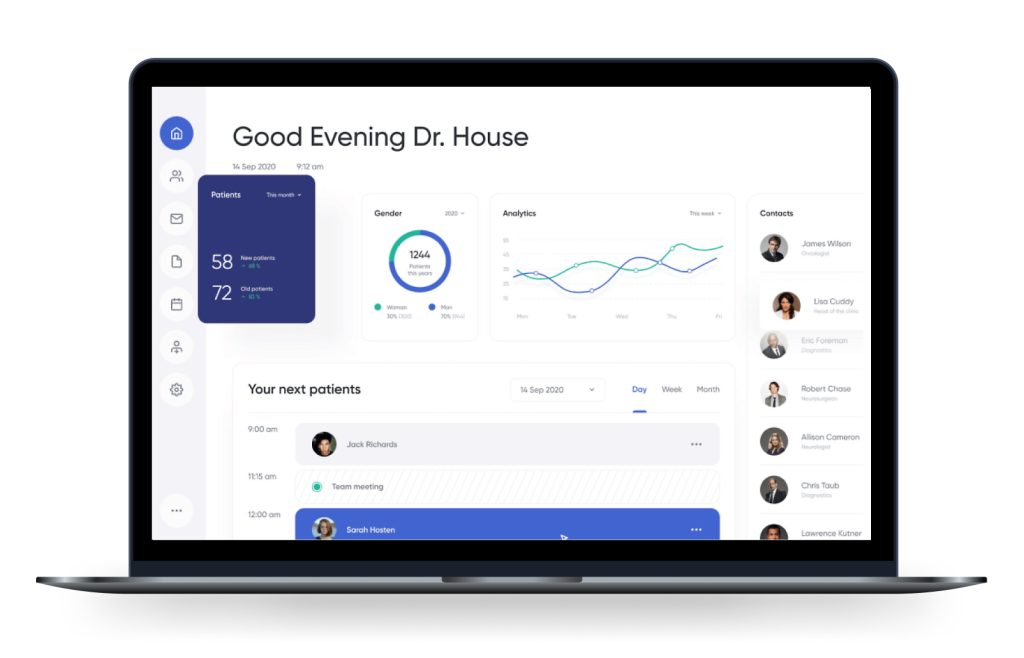In a rapidly evolving digital landscape, enterprise-grade applications are crucial for businesses seeking to maintain a competitive edge. According to recent statistics, the market for enterprise software is projected to reach over $519 billion by 2030. This growth underscores the increasing demand for robust, scalable, and efficient applications capable of handling complex business operations. Ruby on Rails (RoR), a popular web application framework, has emerged as a powerful tool for developing such applications, thanks to its flexibility and efficiency.
What are RoR’s strengths in the enterprise space? How Ruby on Rails could boost innovation for large-scale companies? We are here to answer these and many other questions.
The Power of Ruby on Rails in Enterprise Applications
Scalability and Performance Capabilities
Throughout its existence, Ruby has been fighting the bias of being a “slow” language, incapable of handling large numbers of RPS (Requests per Second). The Ruby 3.0 release aimed to overcome this prejudice, and when combined with Rails 7.0.4, it allowed applications to run smoothly even under heavy usage. While it still lags behind compiled languages like Java and Swift, it remains one of the fastest among interpreted languages. RoR’s architecture supports high scalability, enabling applications to manage increasing loads efficiently through the ability to integrate seamlessly with various databases and its support for caching and background job processing.
Rapid Development and Time-to-Market Advantages
One of the standout features of Ruby on Rails is its convention-over-configuration philosophy, which streamlines the development process. This approach makes the style of the code more consistent and monotypic, which may be a bit dull, but makes the communication between the architect and the team extremely effective. Combined with the simplification of new developers’ onboarding, it’s leading to faster development cycles and quicker time-to-market. Enterprises benefit from this rapid turnaround, allowing them to respond swiftly to market changes and opportunities.
Robust Security Features
Security is a paramount concern for enterprise applications. Ruby on Rails comes equipped with several built-in security features, such as protection against SQL injection, cross-site scripting (XSS), and cross-site request forgery (CSRF). These features help safeguard sensitive data and maintain the integrity of enterprise applications, making RoR a reliable choice for businesses prioritizing security.
Extensive Ecosystem and Community Support
The Ruby on Rails ecosystem boasts a vast array of libraries and plugins, collectively known as gems, which can be leveraged to add functionality to applications with minimal effort. Additionally, the RoR community is active and supportive, providing a wealth of resources, tutorials, and forums where developers can seek advice and share knowledge. This extensive support network accelerates development and problem-solving processes.
Cost-Effectiveness for Large-Scale Projects
Developing enterprise applications can be costly, but Ruby on Rails offers a cost-effective solution. Its open-source nature eliminates licensing fees, and its efficiency in development reduces labor costs. Furthermore, the ability to quickly deploy updates and features helps businesses save on long-term maintenance and operational expenses.
Bottom Line
The Ruby on Rails framework is an excellent solution for rapid prototyping and deployment of applications. Its specifications and features allow developers to create, deploy, test, pivot, release multiple versions, and add new features quickly. In contrast, a team of seasoned Java developers might still be working on their first iteration during this time.
JetRuby Success Stories: Ruby on Rails in Action
Sortly Warehousing App
Today Sortly is a leading warehousing app, but by the time they’ve contacted us, Sortly has many tiny slips, limiting their growth and further development. Sortly was initially represented as a pair of apps, serving different types of customers, which is quite undesirable when you are about to conquer the market. Along with this app-split, there were some challenges with visual and functional representation, as well as the platform’s stability issues. The need for a scalable solution that could handle large volumes of data was paramount.
We completely changed the backend structure of the platform and implemented a new data model, which allowed us to seamlessly scale the project. This is where the Ruby on Rails framework came onto the stage with its vast range of database operation tools and variety of diverse libraries for backend development. The solution also included advanced search functionalities, and a responsive design to enhance usability. For more technical details you may refer to our Sortly portfolio page.
After the final product was released, Sortly experienced a marked increase in client retention and new user acquisition, leading to a substantial return on investment. Since its initial launch, the app gained more than 5,000 positive reviews on the AppStore, with over 300,000 installations worldwide. According to Forbes, Sortly captured a position in the list of the best home inventory apps.
Healthcare Practice App
A series of private hospitals in the USA sought to automate patient appointment scheduling to streamline operations and reduce the need for manual scheduling. They required a platform that was easy to use, complied with HIPAA regulations, and integrated with Athena EMR for secure handling of sensitive patient information.
We developed a Ruby on Rails-based healthcare management platform. Key features included dynamic scheduling, patient data management, secure chat support, HIPAA-compliant document storage, and a comprehensive administrative panel. The platform integrated seamlessly with Athena EMR thanks to a wide range of RoR integration tools, ensuring data security and compliance with industry regulations.
The implemented solution resulted in over 200 medical experts using the platform across six clinics in the USA. The hospitals experienced increased efficiency, and enhanced patient satisfaction due to streamlined appointment processes, and compliance with regulatory standards. The application continues to expand, supporting hundreds of medical workstations and introducing new functionalities such as video meetings and automated reminders. You can also find more on that case in our portfolio.
To sum up both these success stories – the versatility and power of Ruby on Rails in addressing diverse enterprise challenges is undeniable. By leveraging RoR, companies of any size can consistently deliver scalable, secure, and efficient solutions that drive significant business outcomes.
Best Practices for Implementing Ruby on Rails in Enterprise Environments
Architectural Considerations for Scalability
To ensure scalability, it’s essential to design a robust architecture from the outset. This includes using microservices to break down the application into manageable components, employing database sharding to distribute data, and leveraging cloud services for flexible resource allocation.
Performance Optimization Techniques
Optimizing performance involves several strategies, such as implementing caching mechanisms, optimizing database queries, and using background processing for time-consuming tasks. Regular performance monitoring and tuning are crucial to maintain optimal application speed and responsiveness.
Security Best Practices
Implementing security best practices is critical for protecting enterprise applications. This includes using strong authentication and authorization mechanisms, regularly updating dependencies to patch vulnerabilities, and conducting thorough security audits to identify and mitigate risks.
Effective Testing and Quality Assurance Strategies
Comprehensive testing is vital for ensuring application reliability. This involves automated testing frameworks, such as RSpec and Capybara, for unit, integration, and end-to-end tests. Continuous testing and quality assurance processes help identify and address issues early in the development cycle.
Continuous Integration and Deployment (CI/CD) Approaches
Adopting CI/CD practices ensures that code changes are automatically tested and deployed, reducing the risk of errors and speeding up the release cycle. Tools like Jenkins and GitLab CI can automate these processes, enabling teams to deliver updates and new features consistently and reliably.
Overcoming Common Challenges in Enterprise Ruby on Rails Adoption
Legacy System Integration
Integrating Ruby on Rails with existing legacy systems can be challenging. This requires a thorough understanding of the legacy architecture and careful planning to ensure smooth data migration and interoperability. Using APIs and middleware can facilitate seamless integration.
Team Skill Set and Training
Ensuring that the development team possesses the necessary skills to work with Ruby on Rails is crucial. Providing ongoing training and access to resources can help bridge skill gaps and keep the team updated on the latest RoR advancements and best practices.
Performance Concerns at Scale
Addressing performance concerns involves proactive monitoring and optimization. This includes scaling infrastructure based on demand, using performance profiling tools to identify bottlenecks, and optimizing code and database queries for efficiency.
Maintaining Code Quality in Large Projects
Maintaining high code quality in large projects requires strict adherence to coding standards, regular code reviews, and the use of static code analysis tools. Implementing a robust version control system and encouraging collaborative development practices also contribute to maintaining code quality.
Future-Proofing Enterprise Applications with Ruby on Rails
Emerging Trends in Ruby on Rails Development
Staying ahead of the curve involves keeping an eye on emerging trends, such as the adoption of serverless architectures, the use of artificial intelligence and machine learning for enhanced functionality, and the integration of progressive web apps (PWAs) for improved user experiences.
Adapting to Changing Business Needs
Ruby on Rails’ flexibility allows businesses to adapt to changing needs quickly. This includes the ability to implement new features, scale operations, and integrate with evolving technologies, ensuring that the application remains relevant and effective over time.
Long-Term Maintainability and Support
Ensuring long-term maintainability involves writing clean, modular code, documenting thoroughly, and adopting a proactive approach to maintenance and updates. JetRuby’s commitment to ongoing support ensures that enterprise applications continue to perform optimally and evolve with the business.
Summing up
In summary, Ruby on Rails offers a powerful framework for developing enterprise-grade applications. Its scalability, rapid development capabilities, robust security features, and extensive ecosystem make it an ideal choice for businesses looking to innovate and grow. By partnering with JetRuby, enterprises can leverage our expertise to unlock the full potential of Ruby on Rails, ensuring successful implementation and long-term success. Contact us today to explore how we can help transform your business with cutting-edge Ruby on Rails solutions.






